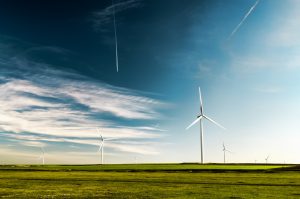Alberta 
Alberta Made Estimated $160M from Renewable Energy Program as Power Prices Surged: U of C report
 The program, introduced in 2016 under the then-NDP government, saw developers bid for contracts for projects to generate renewable energy. Those contracts work by having the government pay the developer the difference between the auction price and the market price of energy, in order to guarantee the developer a fixed price for power generation. But when market prices exceed the auction price, the developers pay the difference to the government. She said low-end estimates show the government has received roughly $100 million in net payments as of Oct. 13 and has saved an additional $60 million in carbon offsets and emission performance credits that developers surrendered in signing contracts with the province.
The program, introduced in 2016 under the then-NDP government, saw developers bid for contracts for projects to generate renewable energy. Those contracts work by having the government pay the developer the difference between the auction price and the market price of energy, in order to guarantee the developer a fixed price for power generation. But when market prices exceed the auction price, the developers pay the difference to the government. She said low-end estimates show the government has received roughly $100 million in net payments as of Oct. 13 and has saved an additional $60 million in carbon offsets and emission performance credits that developers surrendered in signing contracts with the province.
The competitive bid for the Renewable Energy Program saw the winning renewable energy projects — all for wind power — come in at below $40 per megawatt-hour, on average. Alberta is currently rolling out electricity rebates, totalling $300 for eligible customers, with an estimated 1.9 million homes and businesses slated to see the price reduction. But it was argued that fixed rebate program doesn’t provide support to all Albertans, including those who may have a utility sub-meter because they live in an apartment building or a multi-family home.
Source: The Calgary Herald
Electricity Prices for Alberta
The Alberta power pool price averaged 14.234 cents per kWh in October 2022. This price is 12.405 cents lower than last month’s average. The pool price has averaged 13.936 cents per kWh over the last 12 months.
As of November 1, 2022, the forward market was predicting electricity prices for the calendar years of 2022, 2023, 2024, 2025, 2026, 2027, and 2028. These prices are 20.750, 12.201, 8.275, 7.675, 6.725, 6.875, and 6.875 cents per kWh respectively.
Gas Prices for Alberta
Direct Energy’s gas rate for October 2022 was $4.595 per GJ in Alberta. The November 2022 rate has been set at $5.641 per GJ. Alberta gas prices have averaged $5.721 per GJ over the last 12 months.
As of October 2, 2022, the forward market was predicting gas prices for the calendar years of 2022, 2023, 2024, 2025, 2026, and 2027. These prices are 6.03, 4.56, 4.07, 4.24, 4.46, and 4.45 cents per GJ respectively.
British Columbia 
B.C. Making Changes to Advance Hydrogen Industry
The Government of B.C. is bringing forward changes that will further advance the production and use of hydrogen, generating economic opportunities, reducing emissions, and supporting the transition to clean energy. The changes involve establishment of the British Columbia energy regulator, formerly known as the BC Oil and Gas Commission. It will have a modernized and inclusive board structure and the expansion of its regulator responsibilities will include hydrogen. Due to a patchwork system of legislation and regulations, there is currently no cohesive regulatory framework for hydrogen in British Columbia. This legislation will ensure an experienced single-window regulator provides a one-stop place for industry for permitting, and a consistent regulatory, safety and compliance authority for hydrogen projects from site planning to restoration. It will also ensure a more comprehensive consultation and engagement approach with Indigenous communities.
Source: British Columbia Government
Ontario 
Electricity Rates Dropping this Winter in Ontario
 The Ontario Energy Board has decreased electricity rates starting Nov. 1. On-peak prices for time of use customers is dropping from $0.17/kWh last winter, to $0.15/kWh this winter. Tiered pricing will also fall, about $0.01/kWh, which could save Ontario households hundreds of dollars this winter. But those savings could get eaten up by the rising cost of electricity delivery charges, along with propane, oil, and natural gas heating, which has doubled in price over last winter. Mandatory minimum deliveries of heating oil have left some homeowners with the real possibility of no heat this winter.
The Ontario Energy Board has decreased electricity rates starting Nov. 1. On-peak prices for time of use customers is dropping from $0.17/kWh last winter, to $0.15/kWh this winter. Tiered pricing will also fall, about $0.01/kWh, which could save Ontario households hundreds of dollars this winter. But those savings could get eaten up by the rising cost of electricity delivery charges, along with propane, oil, and natural gas heating, which has doubled in price over last winter. Mandatory minimum deliveries of heating oil have left some homeowners with the real possibility of no heat this winter.
Source: CTV News London
Electricity Prices for Ontario
The Hourly Ontario Energy Price (HOEP) was an average of 4.428 cents per kWh in October 2022. This price is 1.442 cents lower than last month’s 5.870 cents per kWh. The twelve-month moving average was 4.399 cents per kWh up to October 2022.
The Actual Rate for the Global Adjustment rate Class B for Septemver 2022 was set at 3.241 cents per kWh. The Global Adjustment is an additional charge paid by non-regulated customers. (Source: IESO)
Saskatchewan 
October Oil and Gas Rights Public Offering Generates $5.4 Million For Province
Saskatchewan’s public offering of Crown petroleum and natural gas rights held on Tuesday, October 4, 2022, raised $5,426,564.36 for the province, which more than doubled the October 2021 offering. This brings the current total for the 2022-23 fiscal year to $34,188,370.54 in revenue for the province. The single exploration license and 72 of the 78 parcels posted received acceptable bids. The Estevan area saw the most interest, bringing in $4,346,574.09 for 49 leases totalling 4,125.495 hectares. The October sale is the fourth of six oil and gas public offerings scheduled for this fiscal year. The next sale will be held on December 6, 2022 and will feature 133 leases covering 18,541 hectares and three exploration licenses covering 5,349 hectares.
Source: Saskatchewan
Manitoba 
Save on Your Heating Costs
 Keep warm air in: Install weatherstripping, caulking, and gaskets around doors, windows, and electrical outlets to reduce air leakage and save energy. Install high-performance windows and doors to reduce heat loss. As a low-cost alternative to upgrading your windows, install an insulating kit on the interior sides of the windows. Insulate an unfinished basement and add attic insulation in a pre-1999 home to keep warm air in and stay comfortable. If you have a wood fireplace, make sure the damper is closed when you’re not using your fireplace. Don’t forget to open it when you light your next fire. Adjust accordingly: Turn your thermostat down at night and when you’re not at home. Consider buying a smart thermostat. It can be controlled remotely to set and adjust the air temperature of your home. It can also learn from your behaviour and will adjust the temperature depending on if you’re home or not. If you have a standard-efficiency natural gas furnace, consider replacing it with a new high-efficiency model that will use less energy and cost you less in the long term. Maintenance is key: Schedule regular maintenance for your heating and cooling equipment. Your equipment will last longer and run more efficiently. Change your furnace air filter every three months. Clean the exterior air intake vent on your furnace.
Keep warm air in: Install weatherstripping, caulking, and gaskets around doors, windows, and electrical outlets to reduce air leakage and save energy. Install high-performance windows and doors to reduce heat loss. As a low-cost alternative to upgrading your windows, install an insulating kit on the interior sides of the windows. Insulate an unfinished basement and add attic insulation in a pre-1999 home to keep warm air in and stay comfortable. If you have a wood fireplace, make sure the damper is closed when you’re not using your fireplace. Don’t forget to open it when you light your next fire. Adjust accordingly: Turn your thermostat down at night and when you’re not at home. Consider buying a smart thermostat. It can be controlled remotely to set and adjust the air temperature of your home. It can also learn from your behaviour and will adjust the temperature depending on if you’re home or not. If you have a standard-efficiency natural gas furnace, consider replacing it with a new high-efficiency model that will use less energy and cost you less in the long term. Maintenance is key: Schedule regular maintenance for your heating and cooling equipment. Your equipment will last longer and run more efficiently. Change your furnace air filter every three months. Clean the exterior air intake vent on your furnace.
Source: Manitoba Hydro
New Brunswick 
N.B. Power to Spend $3.4 million of Proposed Rate Hike on Higher Industrial Subsidies
New Brunswick’s six pulp and paper mills will not be made to pay the same 8.9 per cent increase for electricity next April as other customers of N.B. Power, evidence filed with the Energy and Utilities Board shows. Last week the utility announced plans to raise rates 8.9 per cent “across the board” to all customers to address its rising expenses. Acting N.B. Power president Lori Clark said financial problems the utility faces in the next year are significant and require every customer to contribute equally to address them. But in a 200-page evidence package submitted with the application to the EUB, the utility revealed it will be using $3.4 million of the $135.8 million higher rates are expected to generate to raise subsidies it supplies to six New Brunswick pulp and paper mills. According to N.B. Power’s evidence, transfers to the mills will increase 30 per cent, from an estimated $11.3 million this year to $14.7 million next year. That will help keep the price of “firm” power supplied to the mills from rising as much as it does for other N.B. Power customers. Part of that will cover an expected increase in the consumption of power by the mills next year, but some will partially shield facilities from having to pay the full cost of increased rates.
Source: CBC
Prince Edward Island 
Province Releases Climate Adaptation Roadmap
 The Government of Prince Edward Island’s Building Resilience: Climate Adaptation Plan provides a concrete plan for the province to better prepare for the future while lessening climate change’s impacts on Island residents. More robust systems, infrastructure and ecosystems can help the province become more resilient to the impacts of climate change. The plan contains six themes: disaster resilience and response, resilient communities, climate ready industries, health and mental well-being, natural habitat and biodiversity, knowledge and capacity.
The Government of Prince Edward Island’s Building Resilience: Climate Adaptation Plan provides a concrete plan for the province to better prepare for the future while lessening climate change’s impacts on Island residents. More robust systems, infrastructure and ecosystems can help the province become more resilient to the impacts of climate change. The plan contains six themes: disaster resilience and response, resilient communities, climate ready industries, health and mental well-being, natural habitat and biodiversity, knowledge and capacity.
Source: Prince Edward Island
Québec 
Study Calls into Question Hydro-Québec’s Dual Energy Deal with Énergir
A new study has put into serious question the basis for an agreement between Hydro-Québec and Énergir to use natural gas to reduce electricity demand during peak periods in winter. It shows that Hydro’s dual energy approach to replace gas heating would cost more than if they just used electric heating with heat storage technology, and it would be better for the environment. Created by a team from Écohabitation, the study shows that Hydro’s preferred approach would cost customers more for its dual-energy electric-gas system than if they just used electric heating with heat storage technology, and it would be better for the environment by not making unnecessary use of natural gas. The objective of the agreement is to convert gas-only heating systems to dual energy. Under the agreement, Hydro compensates Énergir for loss of revenues, passing the bill on to customers, in return for which electricity demand would be reduced in peak periods by the use of natural gas.
Source: Montreal Gazette
Newfoundland and Labrador 
Hydro Provides Update on Spending Reductions
Newfoundland and Labrador Hydro provided an update on Hydro’s efforts to cut costs and find efficiencies. Through a combination of reducing executive and full-time positions, eliminating redundancies, and implementing other cost cutting measures, Hydro has reduced its operating costs by approximately $19 million. In the past year, Hydro’s executive structure has been significantly reduced from 18 executive positions to 9. In addition to the removal of “Executive Vice President” and “Senior Vice President” level positions, executive compensation has been adjusted, including elimination of executive vehicle allowances and performance bonuses for all senior level employees. Hydro has eliminated redundancies, reduced travel costs, and other miscellaneous spending. Inflationary pressures have significantly impacted Hydro’s costs of goods and services for items such as vehicle fuel, insurance, and other operational expenses. Hydro has absorbed these costs.
Source: Newfoundland Labrador Hydro
Nova Scotia 
Proposed Legislation Would Limit Rate Increases for Nova Scotia Power
 NSP says new law would hurt its plans to improve reliability of electrical system. Nova Scotians should prepare for a potentially significant jump in power rates, but it won’t be to increase profits for Nova Scotia Power, if legislation proposed Wednesday is passed. Natural Resources Minister Tory Rushton tabled amendments to the Public Utilities Act on Wednesday that heads off a proposed rate increase Nova Scotia Power is seeking from the Utility and Review Board (UARB). While the legislation would limit the potential increase to 1.8 per cent over two years, it does not address the effect major increases in fuel costs could have on rates. NSP recently tabled documents with the utility board showing residential rates could go up by 23 to 25 per cent over the next three years without some form of mitigation. The allowable rate increase is estimated to be worth $25 million to $30 million, all of which must go toward increasing service reliability including better management of trees. Rushton said about 90 per cent of power outages are caused by trees falling on power lines. The amendments will also prevent the UARB from being able to approve Nova Scotia Power’s requests to increase its rate of return or keep any excess profits.
NSP says new law would hurt its plans to improve reliability of electrical system. Nova Scotians should prepare for a potentially significant jump in power rates, but it won’t be to increase profits for Nova Scotia Power, if legislation proposed Wednesday is passed. Natural Resources Minister Tory Rushton tabled amendments to the Public Utilities Act on Wednesday that heads off a proposed rate increase Nova Scotia Power is seeking from the Utility and Review Board (UARB). While the legislation would limit the potential increase to 1.8 per cent over two years, it does not address the effect major increases in fuel costs could have on rates. NSP recently tabled documents with the utility board showing residential rates could go up by 23 to 25 per cent over the next three years without some form of mitigation. The allowable rate increase is estimated to be worth $25 million to $30 million, all of which must go toward increasing service reliability including better management of trees. Rushton said about 90 per cent of power outages are caused by trees falling on power lines. The amendments will also prevent the UARB from being able to approve Nova Scotia Power’s requests to increase its rate of return or keep any excess profits.
Source: CBC
Nunavut 
NNC Holds Community Consultation on Potential Renewable Energy Developments
Nunavut Nukkiksautiit Corporation (NNC) held a public meeting at Iqaluit’s Cadet Hall to explore which areas are most used for traditional use and to see which areas would be best for renewable energy development in the area, be it solar, wind or hydroelectric. This is a part of the Qikiqtani Inuit Association’s (QIA) Tusaqtavut Study for Iqaluit, specific to renewable energy development. NNC and the Firelight Group, a First Nations-owned consulting firm, are conducting the study and said they will also consult past work done at a later point in addition to their own work.
Source: Nunavut News
Northwest Territories 
Feds Deploying Energy Advisors in NWT
The federal government is committing more than $500,000 in the Northwest Territories to help residents make their homes more energy efficient and ultimately lead to the creation of more jobs. Member of Parliament for the Northwest Territories, Michael McLeod, says the government is giving nearly $683,000 to Fort Providence-based Gonezu Energy, which will use the money to train and deploy up to a dozen energy advisors across the Northwest Territories. The announcement in Fort Providence is part of the Canada Green Buildings Strategy, whose main objective is to create a net-zero emissions buildings sector by 2050.
Source: CKLB Radio
Yukon 
Clean Energy Act tabled in the Legislative Assembly
 Minister of Energy, Mines and Resources John Streicker tabled Bill No. 17, the Clean Energy Act (2022) in the Yukon Legislative Assembly. The Clean Energy Act would legislate the Yukon’s targets for reducing greenhouse gas emissions and ensure long-term climate change accountability through public reporting. This proposed legislation would also enable the Government of Yukon to deliver on several key climate actions found in Our Clean Future: a Yukon strategy for climate change, energy, and a green economy. According to Minister Streiker, “The proposed Clean Energy Act would make the Yukon a jurisdiction with one of the most progressive greenhouse gas emissions reduction legislation in North America. The Clean Energy Act would support the government in reaching the goals in Our Clean Future, help the territory move towards a more sustainable future and lay the foundation for a net-zero economy by 2050. I look forward to seeing this legislation move forward and benefit future generations of Yukoners.”
Minister of Energy, Mines and Resources John Streicker tabled Bill No. 17, the Clean Energy Act (2022) in the Yukon Legislative Assembly. The Clean Energy Act would legislate the Yukon’s targets for reducing greenhouse gas emissions and ensure long-term climate change accountability through public reporting. This proposed legislation would also enable the Government of Yukon to deliver on several key climate actions found in Our Clean Future: a Yukon strategy for climate change, energy, and a green economy. According to Minister Streiker, “The proposed Clean Energy Act would make the Yukon a jurisdiction with one of the most progressive greenhouse gas emissions reduction legislation in North America. The Clean Energy Act would support the government in reaching the goals in Our Clean Future, help the territory move towards a more sustainable future and lay the foundation for a net-zero economy by 2050. I look forward to seeing this legislation move forward and benefit future generations of Yukoners.”
Source: Yukon